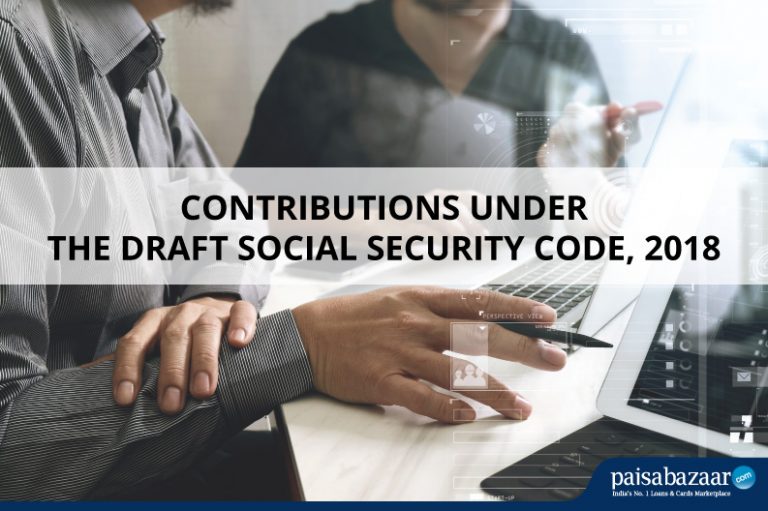Paisabazaar app Today!
Get instant access to loans, credit cards, and financial tools — all in one place
Our Advisors are available 7 days a week, 9:30 am - 6:30 pm to assist you with the best offers or help resolve any queries.
 Get the App
Get the App

Get instant access to loans, credit cards, and financial tools — all in one place

Scan to download on


The Union Labour and Employment Ministry released the draft Social Security Code, 2018, version 2.0. The code aims to reframe the existing social security architecture by replacing as many as 15 laws with a single but integrated labour code. The laws to be replaced include the Employees’ Provident Fund and Misc Provisions Act, 1952, the Employees’ State Insurance Act, 1948, the Maternity Benefit Act, 1961, and the Payment of Gratuity Act, 1972.
The existing social security laws largely exclude unorganized sector workers which constitute over 90% of the total labour force. Therefore, the current architecture is not only structurally complex and opaque but also very limited in its reach. The draft labour code aims to simplify, rationalize and consolidate multiple social security laws into one single code which will have higher coverage, easier understanding and better enforcement.
The code aims to bring both organized as well unorganized sector workers under the same social security net via a common registration platform which implies the present concepts of the IP (of ESIC), UAN (of EPFO), and UWIN (of Unorganized Worker’s Act) will merge into one identity called the VIKAS (Viswakarma Karmik Suraksha Khata).
The Code prescribes for registration of all kind of employers including the commercial establishments, households employing domestic labour, contractors as well as own-account-enterprise. This is a dramatic change from the current coverage of the EPF which only applies to companies employing more than 20 workers.
There will be state-specific social security funds. These will be managed by a social security board for each state and union territory.
The workers at the time of registration shall be classified into four categories (SEC I, II, III, IV) based on their socio-economic status. As per the classification envisaged in the Code, Sec IV category is the most deprived section of the society while Sec-I has the strongest socio-economic status.
20% of (i) monthly income or wage ceiling whichever is lower;
or (ii) national minimum wage; whichever is higher.